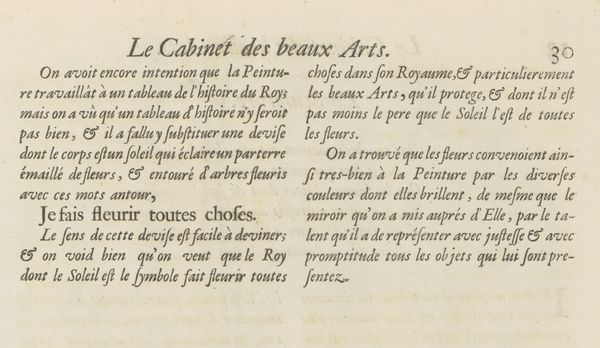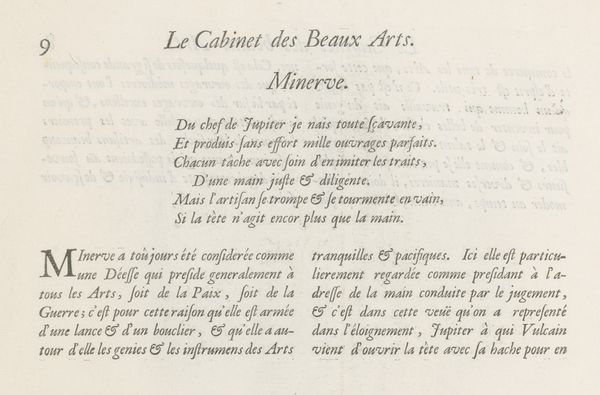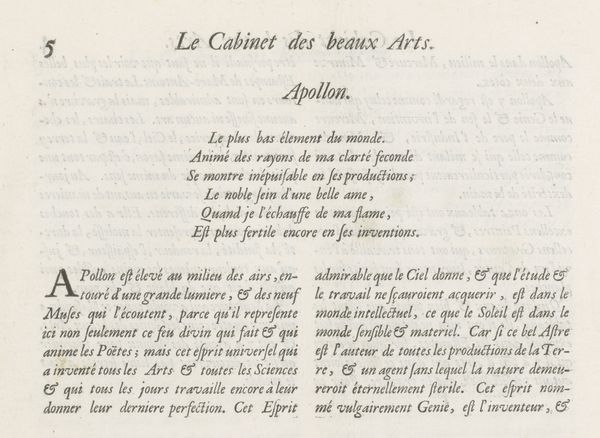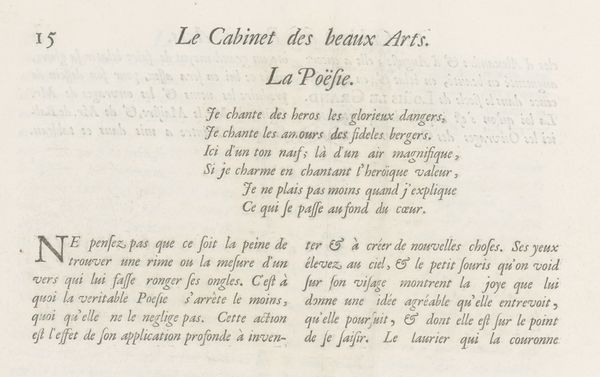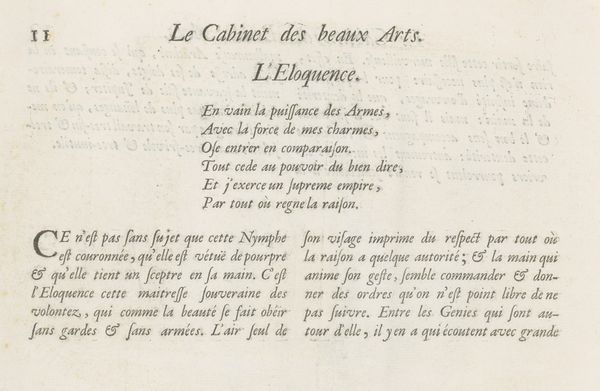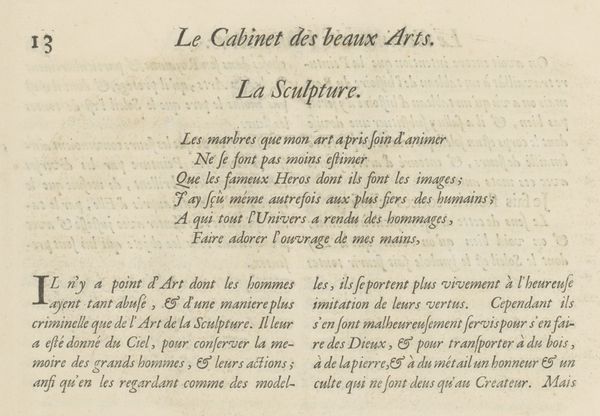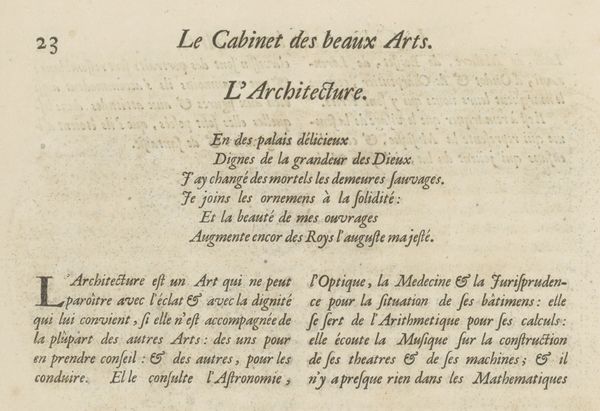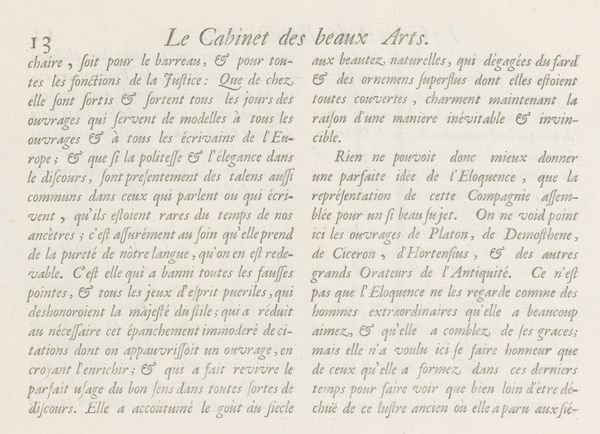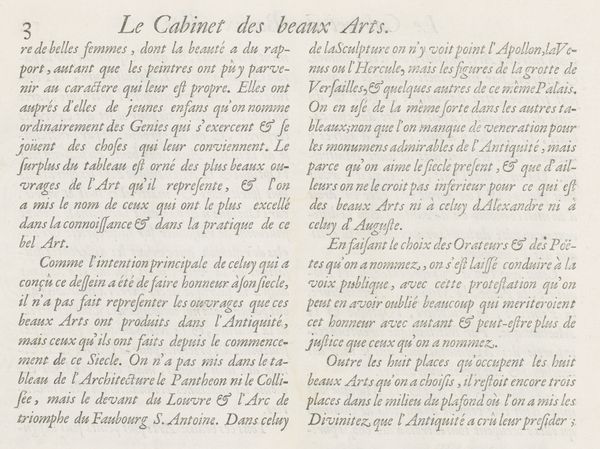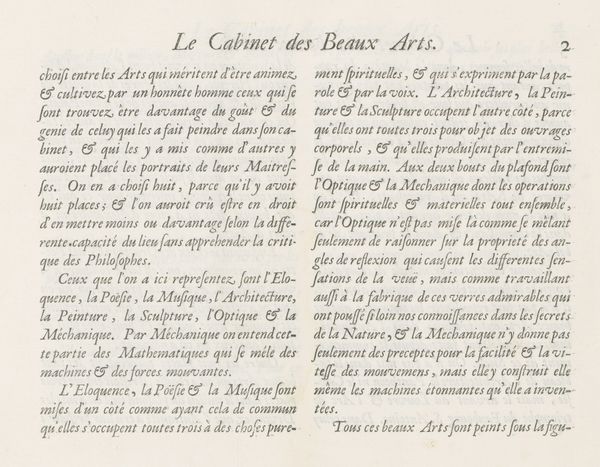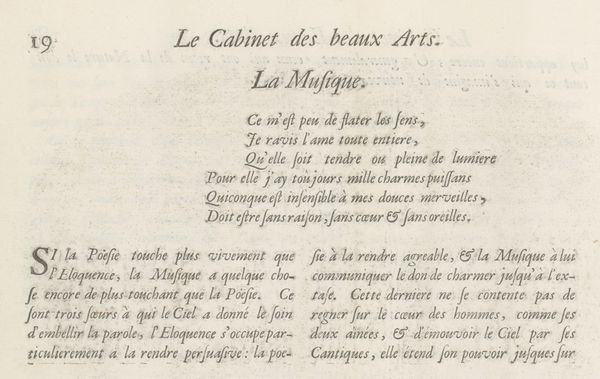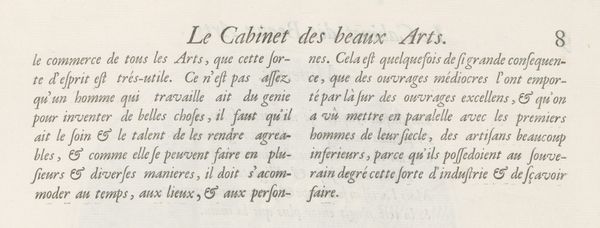
drawing, print, paper, typography, ink
#
drawing
#
hand written
#
script typography
#
hand-lettering
# print
#
hand drawn type
#
classical-realism
#
hand lettering
#
paper
#
typography
#
ink
#
hand-written
#
hand-drawn typeface
#
fading type
#
stylized text
#
history-painting
#
small lettering
Dimensions: height 281 mm, width 380 mm
Copyright: Rijks Museum: Open Domain
Editor: This is "Tekstblad met verklaring van de prent over Beeldhouwkunst, p. 34," created around 1695. It's a print drawing in ink on paper, featuring delicate typography. I'm immediately struck by how it evokes the aesthetics of the late 17th century. What do you see when you look at this piece, especially regarding its broader context? Curator: This printed page is a window into the cultural values of the late 17th century, particularly regarding art and its public role. The text praises the sculpture found in the gardens of Versailles. Consider what Versailles represented: absolute power, wealth, and refined taste, all on grand display. Editor: That makes sense, so this page is essentially promoting that worldview? Curator: Exactly. It's not just about art; it's about using art to reinforce the power of the monarchy. Notice how it speaks of "modern sculptors"? It frames contemporary art as something to be admired and, importantly, something aligned with the king's vision. This page plays a role in shaping public perception of art. How might the proliferation of such texts have influenced artistic patronage at the time? Editor: So, instead of just being a neutral description, this is actively shaping how people perceive art and, in turn, influencing what kind of art gets made and supported. I hadn't thought of it that way. Curator: Precisely. Think of how the narratives surrounding art influence art production. This piece reminds us that art is never created or viewed in a vacuum. It's always shaped by its social, political, and economic context. Editor: I’ll definitely be looking at older texts with new eyes now! Thanks for showing me a fresh lens.
Comments
No comments
Be the first to comment and join the conversation on the ultimate creative platform.

